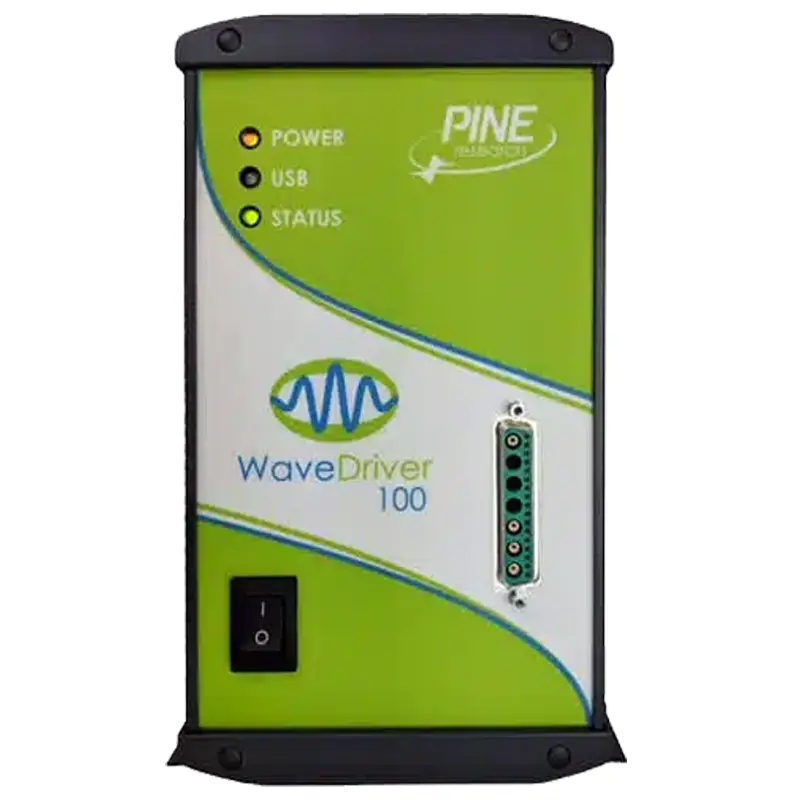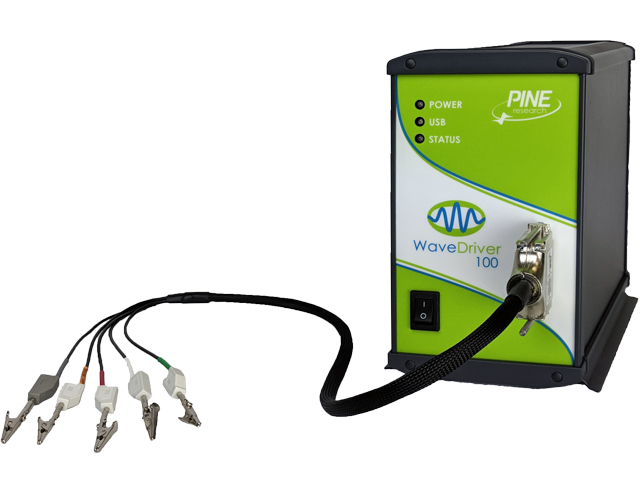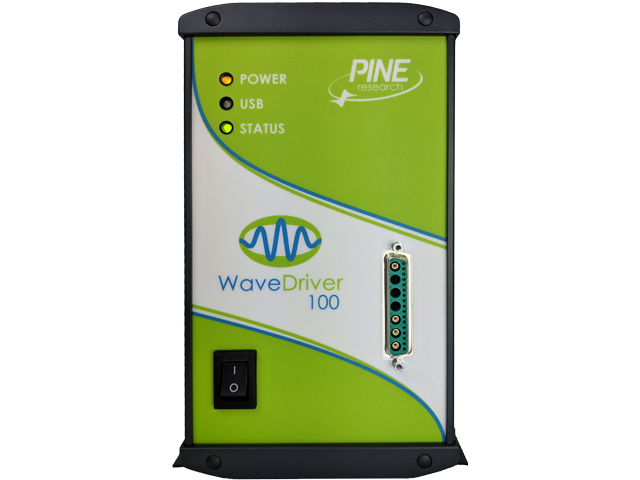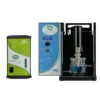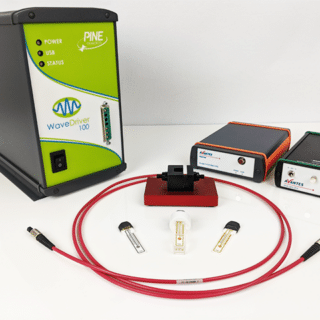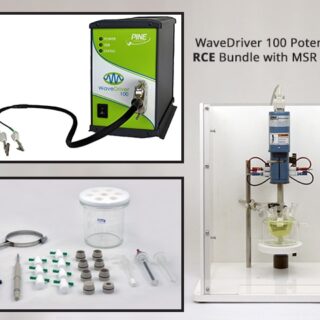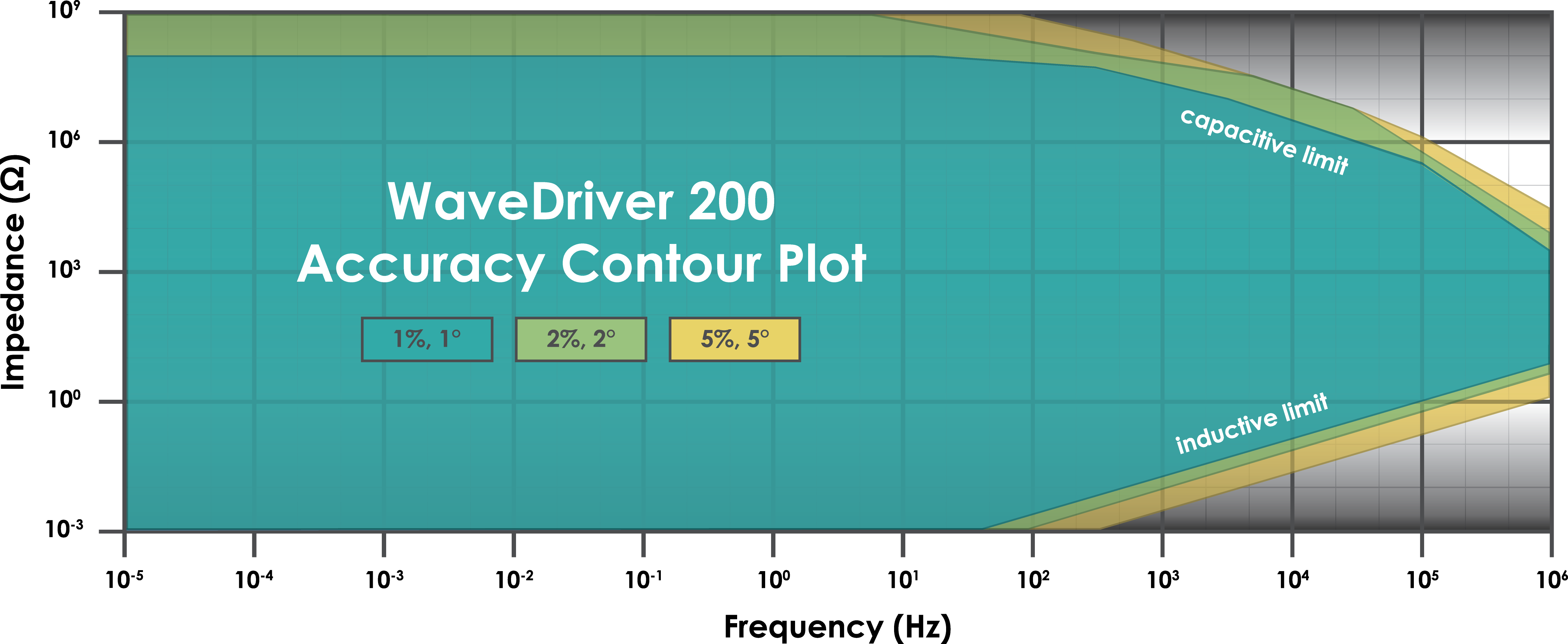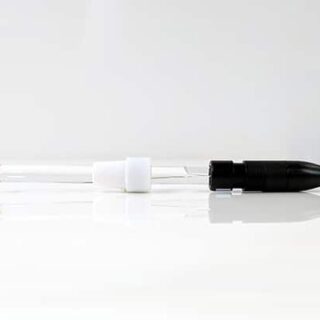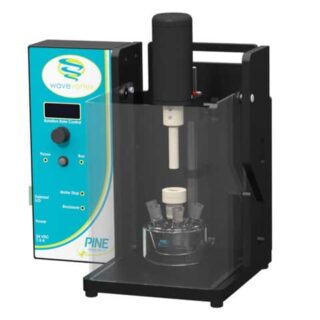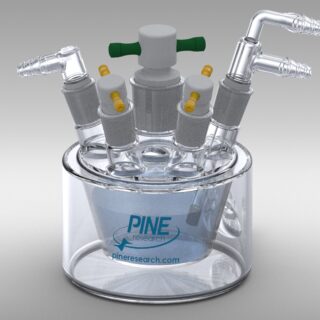WaveDriver 100 Electrochemical Workstation
This WaveDriver® series electrochemical workstation is a robust single-channel system capable of potentiostatic, galvanostatic, and EIS experiments. Under the control of our powerful AfterMath Blue® software package, the WaveDriver 100 electrochemical workstation is capable of performing Electrochemical Impedance Spectroscopy (EIS) along with a wide variety of DC electroanalytical techniques. The WaveDriver 100 is ideal for everyday EIS experiments, cyclic voltammetry, differential pulse and square wave voltammetry, and hydrodynamic methods such as Rotating Disk Electrode (RDE) and Rotating Cylinder Electrode (RCE) voltammetry.
This product can only be purchased in bundles. View these related bundles in the tab below.
Customers must be logged into their account to view prices. Not all regions provide pricing online. If you do not see prices, you can obtain them from the designated sales channel in your region.
Every purchase of a WaveDriver 100 electrochemical workstation includes a free one-hour online training session! Contact Pine Research to inquire about this free session.
The WaveDriver 100 is a single channel electrochemical workstation with EIS, whereas the WaveDriver 200 is a two-channel bipotentiostat electrochemical workstation with EIS. The WaveDriver 40 does not have EIS, and is a two-channel bipotentiostat. Other specifications are shared among all current models of the WaveDriver Series.
The WaveDriver 100 Electrochemical Workstation has been engineered to provide you with the essential hardware and software features you need at an affordable price. This complete electrochemical workstation offered by Pine Research allows you to perform a full range of traditional DC electroanalytical techniques as well as Electrochemical Impedance Spectroscopy (EIS).
Applications. The WaveDriver 100 finds use in academic and industrial research laboratories around the world and across a wide variety of applications. The instrument offers a large range of accessible current ranges (±100 nA up to ±1 A) and potential ranges (±2.5V up to ±15 V) along with advanced filtering and iR compensation. Back panel connections allow rotation rate control when performing voltammetry using a Rotating Disk Electrode (RDE) or Rotating Cylinder Electrode (RCE). Additional input/output and timing connections permit the WaveDriver to control third-party instrumentation in applications such as spectroelectrochemistry.
Electrochemical Impedance Spectroscopy. Our talented team of engineers and chemists have taken a careful approach to integrating EIS into our WaveDriver series electrochemical workstations, giving you access to the most practical range of EIS frequencies (10 µHz to 1 MHz) at an affordable price. We have incorporated powerful and easy-to-use EIS equivalent circuit fitting directly into our AfterMath Blue software platform. Multiple curve fitting algorithms and options allow you to fit even the most troublesome EIS data to one of the built-in equivalent circuit models, or alternately, you can design and draw your own equivalent circuit model.
Integrated Curve Fitting and Analysis. Our software team has seamlessly integrated EIS curve fitting into AfterMath Blue. Why work with more than one software application to fit your EIS data when you can do it using the very same software application that acquired the data? AfterMath Blue EIS curve fitting utilities provide several analyses, including Circuit Fit, Transmission Line, and Kramers-Kronig. Unlike others, our fitting software also provides several fitting methods including Modified Levenberg-Marquardt (LM), Simplex, and Powell algorithms in addition to fitting options that include dynamic point selection, unity, and parametric fitting.
Novel Transmission Line Fitting. AfterMath Blue provides a unique approach to model your porous electrodes. While the transmission line model is not new, AfterMath Blue provides you with some unique transmission line fitting tools. Instead of a static circuit, where you have no control over the elements of the model, we provide a very flexible basic model, from which you can customize nearly all aspects of the model to suit your system. Give it a try – import your three- or five-column EIS data directly into AfterMath Blue and see the difference with our transmission line fitting.
Finishing Touches. While fitting your EIS data, why flip back and forth between Nyquist and Bode plots? Why not be able to view both plots and fits simultaneously? We heard this feedback from many customers and have designed AfterMath Blue to provide you with both plots simultaneously during fitting. Unique slider controls allow you to rapidly vary the value of one circuit component while watching the effect of that component on the Bode and Nyquist plots.
- Soni, C.B.; Barik, S.K.; Vineeth, S.K.; Yadav, B.; Chandra, M.; Sungjemmenla, .; C, S.; Kumar, H.; Kumar, V. Sodium metal anodes with multiphasic interphases for room temperature sodium–sulfur pouch cells. J. Mater. Chem. A 2025, 13, 6813-6825.
- Singh, A.D.; Cyril, A.A.; Varshney, G.; Dey, A.; Sengupta, S. Electrodeposited multiphase Sb, SbSn, Cu2Sb composite with superior chemical buffering as negative electrode for lithium-ion batteries: Effect of composition on lithiation behavior of Sb-Sn-Cu alloys. Journal of Alloys and Compounds 2024, 1005, 176174.
- Nachaki, E.O.; Kuroda, D.G. Transitioning from Regular Electrolytes to Solvate Ionic Liquids to High-Concentration Electrolytes: Changes in Transport Properties and Ionic Speciation. J. Phys. Chem. C 2024, 128, 11522-11533.
- Jeong, S.; Branco, A.J.; Bollen, S.W.; Sullivan, C.S.; Ross, M.B. Universal pH electrocatalytic hydrogen evolution with Au-based high entropy alloys. Nanoscale 2024, 16, 11530-11537.
- Senadheera, D.I.; Carrillo-Bohorquez, O.; Nachaki, E.O.; Jorn, R.; Kuroda, D.G.; Kumar, R. Probing the Electrode–Electrolyte Interface of Sodium/Glyme-Based Battery Electrolytes. J. Phys. Chem. C 2024, 128, 5798-5808.
- Malone, N.; Fiedler, H.; Mitchell, D.R.G.; Kennedy, J.V.; Waterhouse, G.; Gupta, P. Grain Boundary-Rich Tungsten Carbide Nanoparticle Films Exhibit High Intrinsic Activity Toward Hydrogen Evolution. ACS Appl. Nano Mater. 2024, 7, 4843-4852.
- Zhou, Y.; Chu, B.; Sun, Z.; Dong, L.; Wang, F.; Li, B.; Fan, M.; Chen, Z. Surface reconstruction and charge distribution enabling Ni/W5N4 Mott-Schottky heterojunction bifunctional electrocatalyst for efficient urea-assisted water electrolysis at a large current density. Applied Catalysis B: Environmental 2023, 323, 122168.
- Ren, Q.; Hou, C.; Yu, J.; Madatta, I.J.; Lin, Y.; Jian, Z.; Ding, J. Kinetics-Boosted Bimetallic Organic Complexes Modified BiVO4 Photoanodes for Photoelectrochemical Water Oxidation. .
- Moshari, M.; Koirala, D.; Allen, P.B. Facile Fabrication of DNA Biosensors Based on Oxidized Carbon Black and Graphite Oxide. , 41, 70.
- Chu, X.; Sathish, C.I.; Li, M.; Yang, J.; Li, W.; Qi, D.; Chu, D.; Vinu, A.; Yi, J. Anti-Stoke effect induced enhanced photocatalytic hydrogen production. , 2, 20220041.
- Uwadiunor, E.; Johnson, D.; Hansen, K.; Djire, A. Controlling the Surface Reactivity of Hybrid Ti3CN MXene via In-situ Electrocatalysis. ChemCatChem , 14, e202200702.

